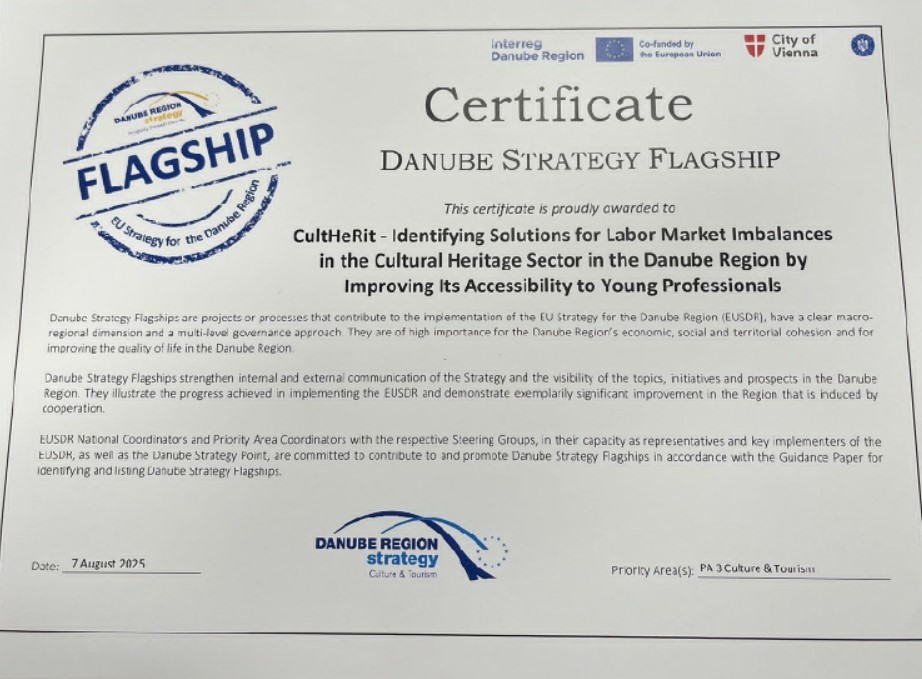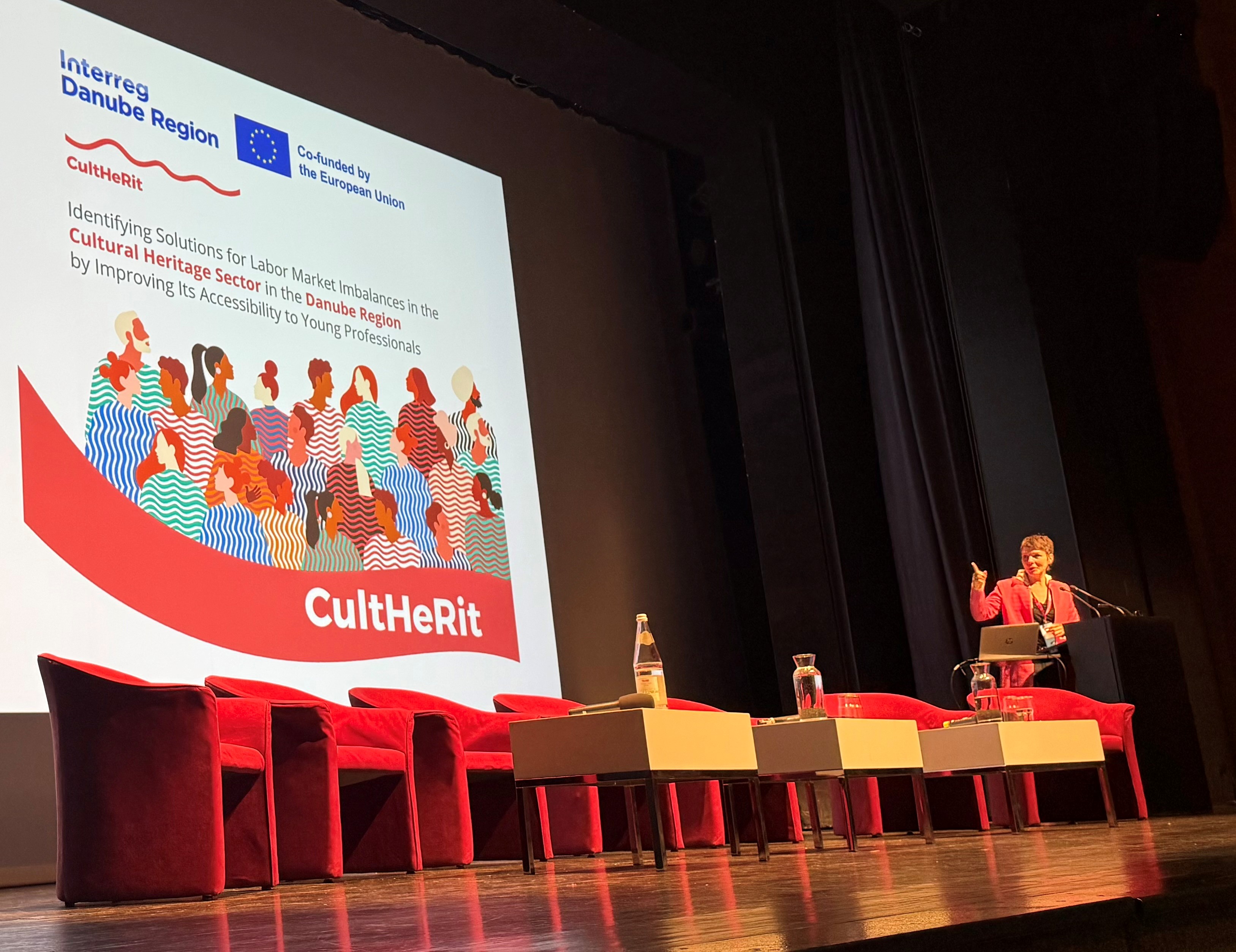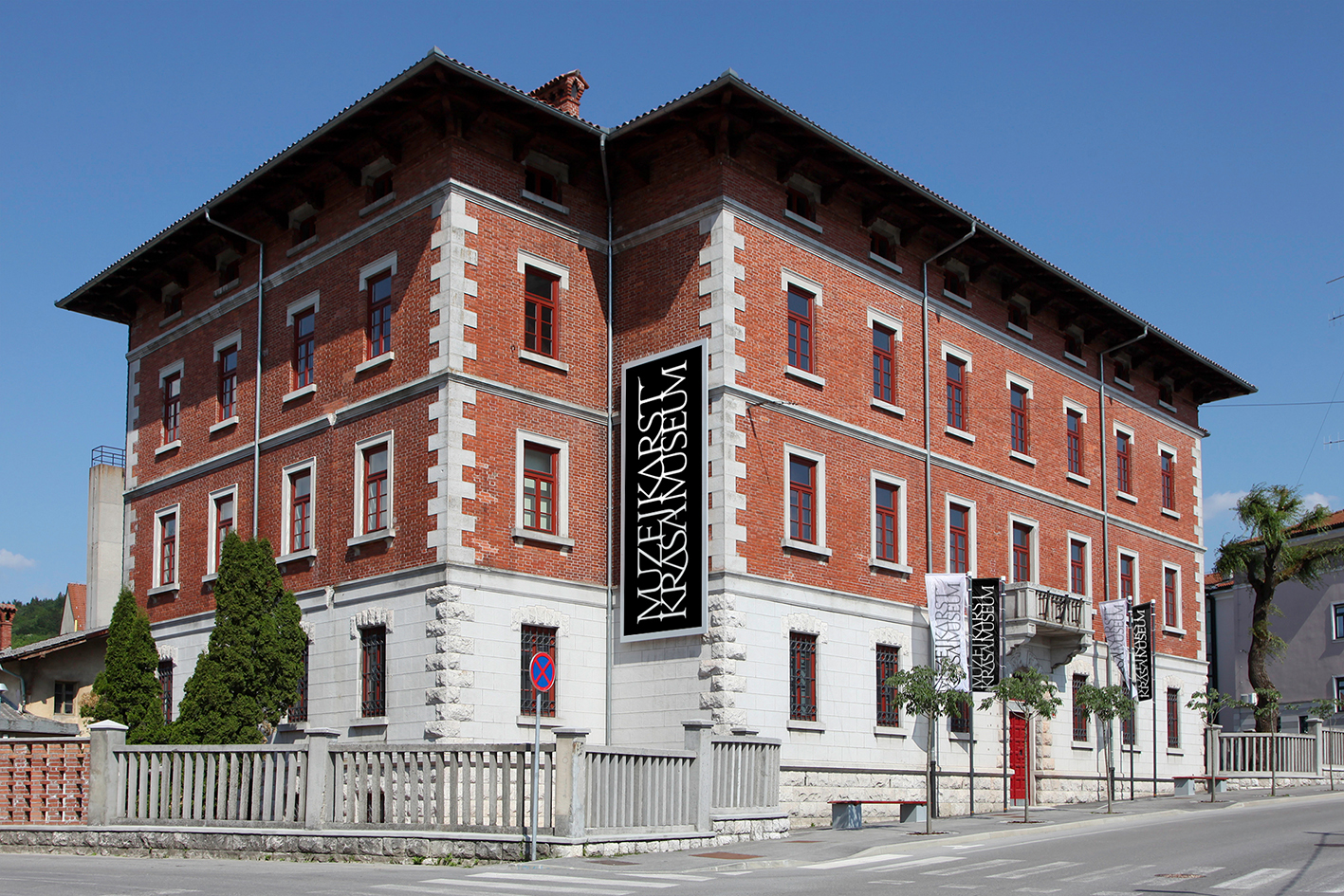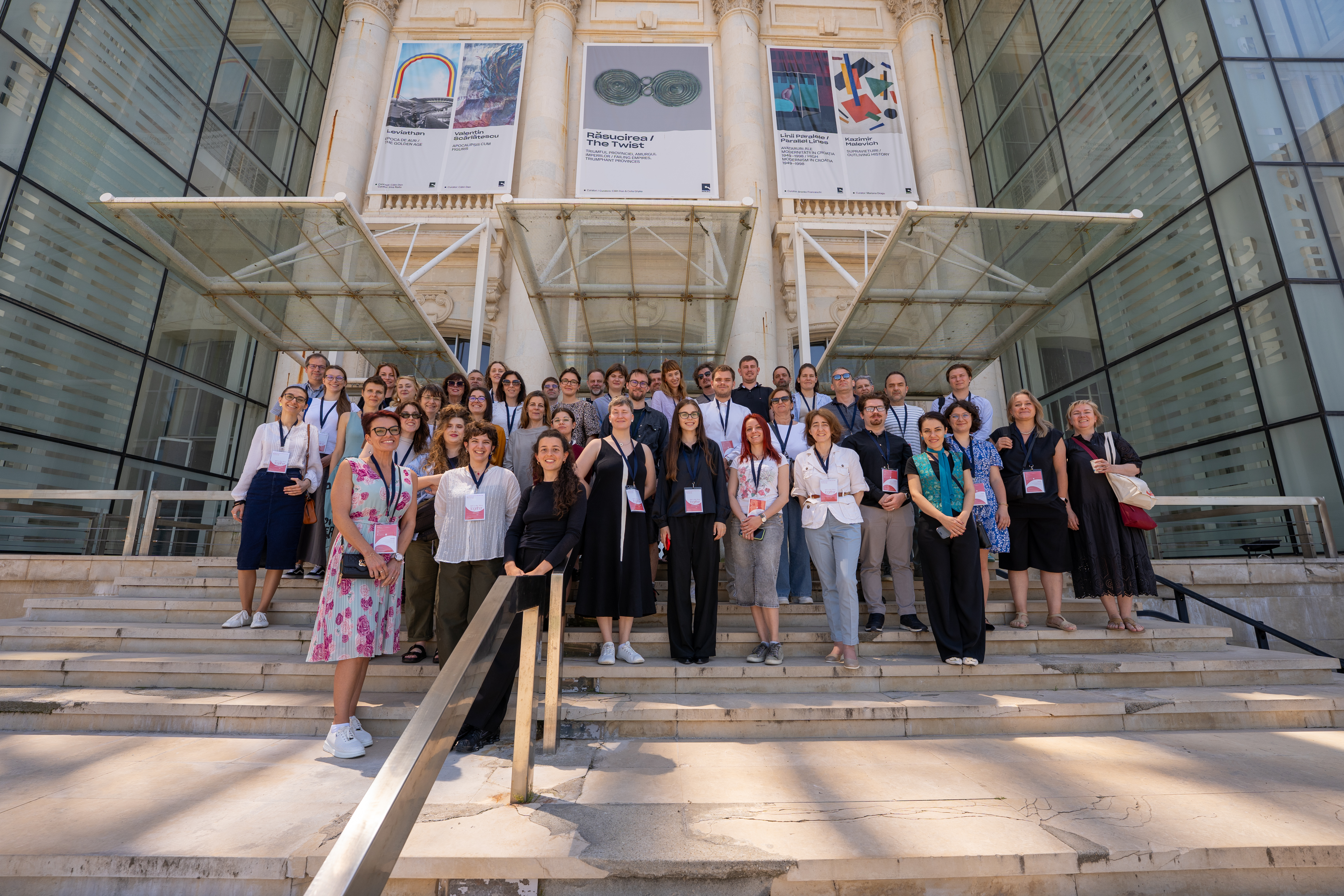Homepage

Main visaul of the CultHeRit project
What is #CultHeRit all about?
CultHeRit is an initiative of 13 cultural heritage institutions and their associations from eight countries of the Danube region who gathered to identify and test solutions for the brain drain of young talents and professionals from the cultural heritage (CH) sector. This phenomenon manifests on both sectorial (from the cultural heritage to more lucrative sectors), and territorial (from East to West) level. To reverse this, the multidisciplinary partnership from the region aims to induce positive changes of the current employment practices in the cultural heritage institutes and museums (CHIM) in the region. By increasing the accessibility of the sector for the young professionals, the project contributes to slowing down and reversing migration of the highly educated young people and to retaining the skilled labor in the CHIM, while increasing diversity of the sectoral workforce. Ultimately, CultHeRit strives to ensure that the sector becomes and remains attractive workplace which offers a rewarding career and professional development to all its employees.

How #CultHeRit project team will do so?
It will do so by elaborating and testing possible solutions and promoting them through advocacy campaigns and events. But first, it will understand the current situation by collecting needed information and identify the extent of the problems through comprehensive analysis. After a period of relative economic stability conducive for the blossoming of the cultural sector which saw a stable employment situation, in the recent decades the situation has deteriorated rapidly. As a result, the attractiveness of a career in the cultural heritage sector decreased, since in most cases, the employers have not been able to introduce innovative employment practices to compensate for the modest financial reward. As there is no defined sectoral career path and employment model for hiring and integrating young professionals, the universities may prepare young candidates whose expectations are not in line with the offer of the prospective employers. Available models or HR practices from other sectors can be informative, but generally are not applicable due to the special legal status of the employees and type of work in the sector. All of this has led to discrepancies in the sectoral labor market. Recent research shows that ‘post-Covid narrowing of opportunities, exposed pre-existing vulnerabilities leaving a whole generation of young cultural workers struggling to find stable employment’. Prevalence of project-based employment has become endemic in the CHIM sector. Coupled with modest remuneration and lack of formalized career path or advancement opportunities for young professionals it contributes to job instability and uncertainty.

Main objective of the #project
CultHeRit’s partnership of thirteen highly-motivated institutions has embarked on developing common solutions to reverse these processes, improve the accessibility and offer stable and fulfilling careers in this sector. The first steps to obtain relevant, reliable and comparable data, which, as review of emerging literature and policy documents show, is a challenge in itself. The partners will analyze dynamics and current conditions in the sectoral labor market: employment practices, educational offer and expectations of potential candidates. After diagnosing extent of the problems and identifying areas for improvement, the partners will jointly devise aspirational transnational employment model. Through a series of pilot actions, ten partner organizations will test applicability of this ideal model under real-life conditions, after adapting it to the national regulations and local environments.

As a result, the partners will propose viable and widely-applicable solution for recruitment, employment, and retention of employees: data-based transnational model for employment of young professionals. The model is unique as it has been tested in the actual workplace setting by employing ten young professionals in ten CHIM organizations of the partnership. It also represents the highest standard in this sector in the Danube region. In parallel, the partnership also aims to better understand the general employment situation and accessibility of jobs to vulnerable groups in CHIM in participating countries. After identifying obstacles to accessibility of employment in the field faced by young people, people with disabilities, people living in rural areas and women, the opportunities and viable solutions for intervention will be explored, such as possibilities offered by remote work. All activities of the project will inform the recommendations on removing the obstacles in the Strategy to Improve Accessibility of Jobs and Employment Situation in the CHIM sector in DR. These recommendations, in turn, will be used to address policy and decision-makers through advocacy measures. Through analysis of the labor market imbalances as well as strategic recommendations for achieving more diverse and inclusive workplaces and improving youth employment and access of vulnerable groups to the jobs in the sector, the project joins initiatives which safeguard participation and access for all in the labor market and foster upward social mobility.
News & Events
Read the most recent updates and explore the upcoming events.
Project overview
Need any help? Contact us!

Zsombor Jékely
Director of Collection, Hungarian National Museum Public Collection Centre Museum of Applied Arts, Budapest - Lead Partner in the CultHeRit project

Marija Jurkić Flis
Marketing & PR Associate, Museum of Arts and Crafts Zagreb, coordinator of the communication activities in the CultHeRit project






